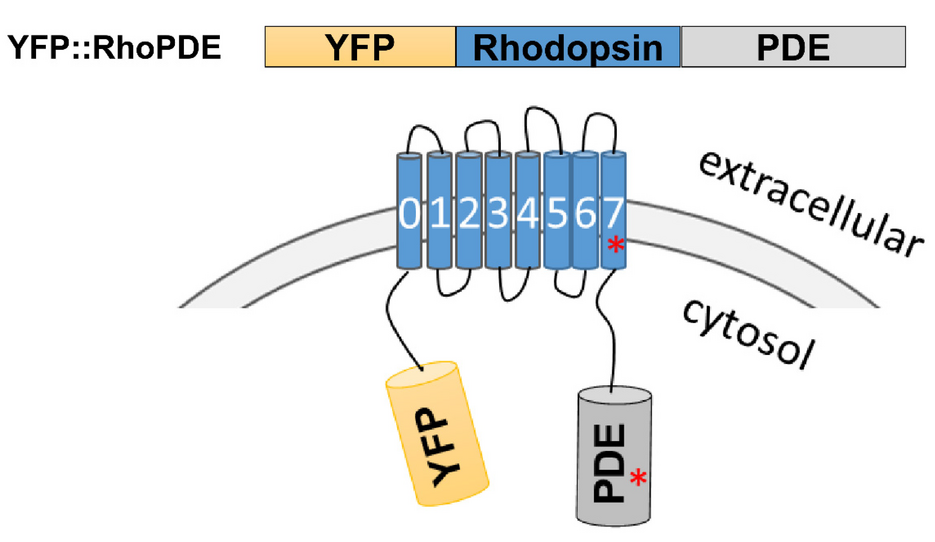Characterization and Modification of Light-Sensitive Phosphodiesterases from Choanoflagellates
12/27/2021Characterization and Modification of Light-Sensitive Phosphodiesterases from Choanoflagellates
Yuehui Tian, Shang Yang, Georg Nagel, Shiqiang Gao
Biomolecules 2022, 12, 88.
Enzyme rhodopsins, including cyclase opsins (Cyclops) and rhodopsin phosphodiesterases (RhoPDEs), were recently discovered in fungi, algae and protists. In contrast to the well-developed light-gated guanylyl/adenylyl cyclases as optogenetic tools, ideal light-regulated phosphodiesterases are still in demand. Here, we investigated and engineered the RhoPDEs from Salpingoeca rosetta, Choanoeca flexa and three other protists. All the RhoPDEs (fused with a cytosolic N-terminal YFP tag) can be expressed in Xenopus oocytes, except the AsRhoPDE that lacks the retinal-binding lysine residue in the last (8th) transmembrane helix. An N296K mutation of YFP::AsRhoPDE enabled its expression in oocytes, but this mutant still has no cGMP hydrolysis activity. Among the RhoPDEs tested, SrRhoPDE, CfRhoPDE1, 4 and MrRhoPDE exhibited light-enhanced cGMP hydrolysis activity. Engineering SrRhoPDE, we obtained two single point mutants, L623F and E657Q, in the C-terminal catalytic domain, which showed ~40 times decreased cGMP hydrolysis activity without affecting the light activation ratio. The molecular characterization and modification will aid in developing ideal light-regulated phosphodiesterase tools in the future.






